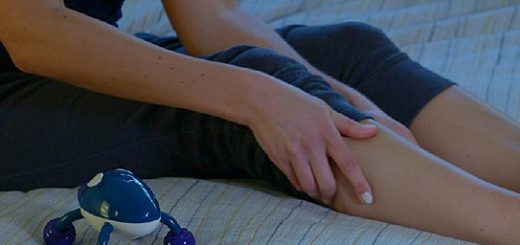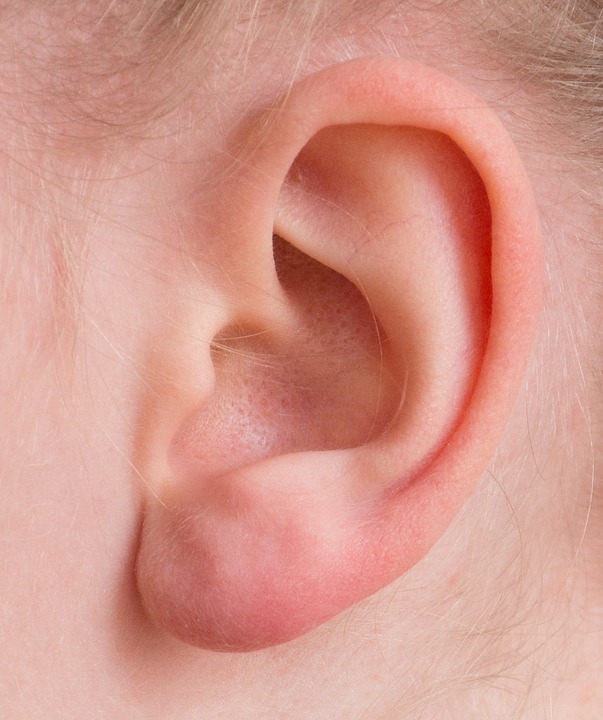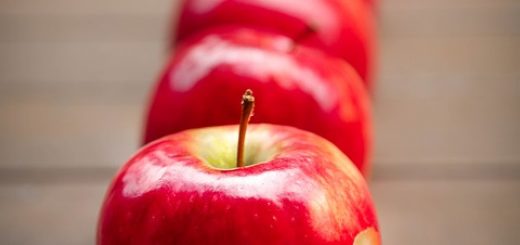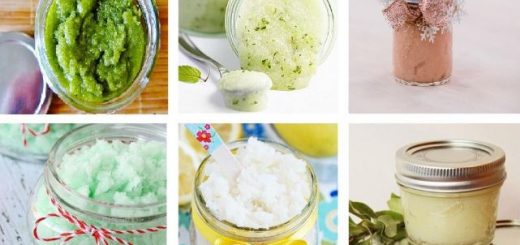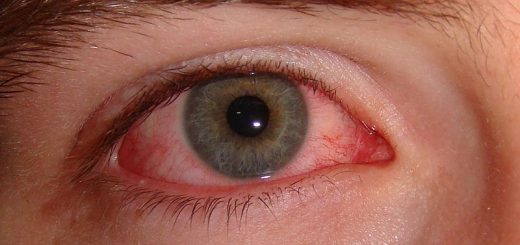36 Home Remedies for Ingrown Hair
An ingrown hair can create a raised, red swelling that looks like a little lump. In some cases, the lump could have a discharge within it that becomes evident when ruptured. The area affected may have the following:
- Redness
- Swelling
- Inflammation
- Pain
- Skin irritation
Ingrown hairs are also known as razor bumps. These are hair that curled around and grown back into the skin instead of growing out of it. It is shown by raised, pimple-like red mark and curled hair.
Ingrown hair is a condition common in people with curly hair. The parts of the body where ingrown hair commonly appears are in the legs, beard and bikini areas.
Over time the ingrown will go away in many cases without using any remedy. However, there are various homemade treatments that will be helpful in relieving ingrown hair.
Home Remedies for Ingrown Hair
-
Shave it Off
This is very important to remember, to shave with the hair. It will create less friction, less irritation and will reduce the number of razor bumps. Shaving against the grain might seem to give you a closer cut, but this technique is much tougher on your skin and hair. It pulls up the hair when the blade passes over and catches it. Once you are done shaving, the result will be that the haircut up just below the surface. This is when the hair struggle and will not grow in a normal way.

Shaving with the grain makes it less likely that you will have an ingrown hair
-
Coconut Oil Before and After Shaving
Pure coconut oil is one of the best home remedies for various skin conditions. It makes a wonderful zit treatment for ingrown hairs or razor bumps. When you apply before shaving it provides a barrier between the blade and the skin. It also gives the much vital moisture to prevent itchiness and irritation in the skin afterward.
To use this home remedy, wash your hands and apply coconut oil thinly to affected areas. A small amount will usually do the trick.
-
Oatmeal
Oatmeal has antioxidant and anti-inflammatory properties. It relieves skin irritation naturally. The colloidal oatmeal was approved by the U.S. FDA as a skin protectant.
Mix an equal amount of ground oatmeal, yogurt, and honey. Spread over the affected area. Leave it for half an hour. Wash it off with cold water. This method safeguards the growth of ingrown hair.
-
Keep it Sharp
It is not advisable to use a dull blade as it can greatly contribute to the growth of ingrown hair. A dull blade twitches the hair and can create sharp edges. This happens especially in a curly hair. It can even pull out the hair completely, causing in ingrown hairs or razor bumps.
-
Try not to Dig the Hair Out
Remember that pointed tweezers are better to use. This will let you have a good grip of the hair without hurting the skin.
-
Sugar
The dead skin cells of the body can effectively remove by an exfoliator. Use sugar concurrently with other common ingredients works as a natural exfoliator. This can actually do wonder in bringing out ingrown hair.
Make a paste of extra virgin olive oil and white sugar. You can use jojoba oil in the place of olive oil. Drop in five drops each of lavender oil and tea tree oil.
Put on this scrub on the affected area. You have to gently apply in a circular motion for a few minutes. Leave it for five minutes. Wash it off with lukewarm water. Use this remedy once a day. Note that the scrub can be kept in an airtight container. You have to keep it in the refrigerator for further use.

Sugar is coarse enough to clear away dead skin but gentle enough not to hurt healthy skin
-
Calendula Oil
Basically, the different kinds of oil can work wonder in treating skin razor bumps. Calendula oil is an effective home remedy for treating such skin conditions.
The oil is taken from calendula flowers. It is popular for its gentle effect on the skin and it also has strong antiseptic properties. It helps to soothe burning, irritated skin, reducing redness and gives pain relief.
Dilute about six drops of calendula oil with a teaspoon of jojoba, almond or coconut oil. Apply this mixture to the affected area. Note that pure calendula oil can worsen the irritation.
-
Use Single Blades
Single blades razors tend to be less irritating than those with multiple blades. Although the multiple ones can produce a very nice shave, one blade is enough. Actually, it can cause more skin irritation when shaving with multiple blades.
-
Epsom Salt
If you have a problem with razor bumps, especially in the bikini area, this particular remedy is very effective. Add two cups of Epsom salt in warm water to bath. Drench for at least ten minutes in the Epsom salt bath. For best results, you can soak up to thirty minutes. Finally, put on moisturizer.
To exfoliate dead skin cells and remove ingrown hair, you can mix tablespoons of Epsom salt in one cup of water. Dip a cotton ball into the solution. Place the cotton ball on the affected area for 10 minutes. This should lift off the dead skin cells and let the ingrown hair to come out.
-
Honey
It is well known that honey can help moisturize the skin. It also works effectively as an antiseptic and can reduce swelling and inflammation.
Rub on a layer of honey directly to the affected area. Let it soak for ten minutes. Rinse it off with cold water. Do this two-three times a day. It is recommended to use raw unprocessed honey. It is more effective than the processed one.
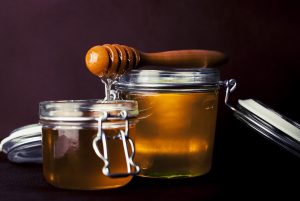
Honey in jars
-
Apple Cider Vinegar
Apple cider vinegar is a highly recommended home remedy as it has been popularised in its use for treating the range of inflammation. This serves it as a worthwhile remedy to stop irritation that is a common effect of ingrown hairs. This is by no means a universal method as it might not be suitable for use on certain skin types.
There are many who do not qualify for this treatment as their scalps are too dry and their skin fragile. When this method is practiced, apple cider vinegar should be applied directly to the affected area. Although, as stated earlier, it is not for everyone, it is worth a shot for some.
There has been vigorous debate concerning the effectiveness of apple cider vinegar in reducing inflammation. There is strong and definitive evidence supporting this weak acid and for the time being, it can be confidently applied. Considering that inflammation is the chief cause of pain and discomfort, this is certainly worth your time.
It has also been known to prevent infections. Diluting the vinegar in warm water is a valid option if the vinegar’s strength concerns you.
-
Cornstarch
Splicing some corn-starch can create an effective mix. This concoction can mitigate pain and swelling associated with ingrown hair, similar to products such as baking soda. The mixture should be applied generously to the aggrieved area only.
-
Tea Tree Oil
This is an essential oil that has great medicinal effects concerning ingrown hairs. It possesses a strong and effective antiseptic that annihilates the infection that ingrown hairs may induce.
This too will combat inflammation and discomfort – reducing the length of your recovery time. It is crucial that the oil must be mixed with oil to reduce its potency. Only then, can this be safely applied to the skin – free of a strong irritable reaction.
Combine two tablespoons of a neutral oil and 15 drops of tree oil until they are indistinguishable. Apply this mixture directly to the ingrown hair. Now, use the cotton swab to gently clean the surrounding area and any excess oil. Only small amounts are necessary. This process should be reiterated at least twice a day. Any extra solution can be stored in a glass jar away from cold or heat.
-
Aspirin
It reduces the effects of swelling and the reddish tint associated with the discomfort ingrown hair will inevitably evoke. It possesses salicylic acid that loosens ingrown hair and allows for easy extraction.
Allow two aspirin pills to dissolve in a small amount of water with the purpose of creating a paste. This should not be coarse. It should be applied to your skin then left to sit for approximately ten minutes. This should be subsequently cleaned off thoroughly. It is recommended that an application cycle of two-three days should be adhered to. It should be applied continuously to the effects of ingrown hair have subsided.
It’s of paramount importance that a skin test is performed before real application of this, or any substance is applied to your body. People are all different and may react differently to this mixture. In particular, people with fragile skin may suffer adversely.
-
Exfoliate
Exfoliation should be executed prior to attempting any remedy. Exfoliation allows for the exposure of the hair shaft and the possibility of recovery. Any method, in fact, that will expose your follicles more, will work. This includes waxing too.
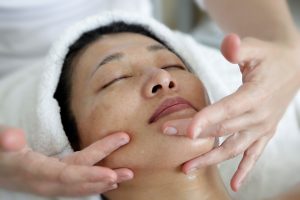
Facial massages can be done at home or at a spa to help with exfoliating
-
Cucumber
This vegetable has a naturally high concentration of liquid that will nourish your body. The added moisture will reduce inflammation and swelling. The cucumber is ideally served chilled and sliced into smaller, more manageable sizes.
These slices should not be consumed. Rather, they should be applied to the affected areas. This has proved to be a simplistic, yet extremely underrated technique. It should be put to use daily until your symptoms subside.
The other option is to create a paste out of the cucumber and splice this with milk. This mixture should subsequently be refrigerated and then put on the skin with the aid of a cotton swab. This should be allowed to work for fifteen minutes and cleaned off with lukewarm water.
-
Baking Soda Paste
This is an effective alternative to manually removing hair. Baking soda paste can here be used as a tool. This can be used as an exfoliator of sorts. This can be substituted with sugar and olive oil scrubs too.
As baking soda is an easily-obtainable product and mild in strength- it prevents the follicles from blocking and allows the hair a chance to properly grow. This can also act as an additional way to use baking soda as an anti-inflammatory. Using this with the addition of coconut oil as a moisturizer (or any usual moisturizer) will allow the skin to unstiffen.
-
Coconut Oil or Mild Moisturizer
Combine water and baking soda to create a coarse paste that was dense enough to be spread, but make sure it is not so dense as to stick together in solid masses of little use and effect. These will only fall off your skin, doing little to assist you. You should only apply this to your body with clean hands that have been washed with soap and water.
The paste should be applied with a circular motion of firm, but gentle nature. This will result in an effective application of the paste. This, as with all pastes applied, should be rinsed though roughly. Now, the moisturizer in the form of coconut oil or any other can be tastefully applied to the now clean area.
-
Sea Salt
Sea salt has various applications that can prove useful in treating ingrown hair. It can help exfoliate your skin, reduce inflammation in the affected areas, increase your blood flow and generally reduce the recovery time needed for ingrown hair. Once again, as a paste, this substance is most effective.
The creation of paste based on dilution with water is recommended. It should be applied with a cotton ball or swab. Again, leave this on for ten-fifteen minutes and subsequently rinse off the residue using lukewarm water. A repeat cycle of twice a day is considered ideal for most people. As always, it should be consistently and constantly repeated until you are healed.
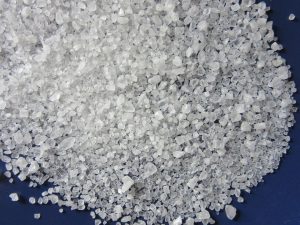
Sea salt is generally coarser than table salt
-
Strawberries
The family of berries has excellent health benefits that make them a point of reference when considering home remedies. Squash a couple of strawberries and combine with sour cream to create a paste of sorts. This should be used on the aggrieved skin tissue and left for a long time, generally twenty minutes. After a thorough application process, it should be removed using cold water.
-
Moisturize
Stiff and hard skin allows hairs to get blocked or harden. So on the other end of the scale, soft skin will achieve the opposite results. Soft skin will, in particular, prevent the hair from being forced to grow sideways due to dead skin cells pressing up against it.
Prevention is better than a cure, and proper moisturizing will ward off razor bumps and ingrown hairs in particular. Applying a shaving cream makes it possible for the razor to glide over your skin, allowing for a seamless and painless shave that is better for your hair. It is renowned for preventing nagged and coarse hair. It forms a protective layer that combats skin discomfort in the future.
-
Garlic
This household ingredient is used in the purging of ingrown hair. It has been used in several cultures to treat a range of health and skin ailments with excellent results.
Its application should be done as follows: crush the garlic into fine pieces and pile onto the ingrown hairs. This should then be held in place with a bandage or dressed in linen. Allow it the best part of an hour, thirty-forty minutes, to seep into your skin. This should then be washed off with soap and water. As garlic is considered a generally mild substance, it can be safely applied twice a day.
-
Milk and Bread
Loosening ingrown hair and its movement to the surface of your skin can be assisted with milk and bread. Though this might sound strange to many, it is a worthwhile remedy you can put to use at home.
Soaking a piece of bread in warm milk can allow the substance to be applied effectively to a single area. A band-aid can then be used to hold it in place. This is ideally repeated a total of two-three times in a row until the ingrown hair surfaces and bares itself, ready for extraction. This should be done using a sterilized object, ideally a needle.
-
Aloe Vera
This is especially effective as it is an herbal remedy. This pick of home remedies has a reputation as an anti-inflammatory treatment. It can also be used as a less aggressive, but active agent in topical creams that are formulated to mitigate razor bumps and ingrown follicles.
This remedy is proven to be rich in beta-carotene, a range of vitamins like Vitamin E, Vitamin B12, Vitamin C, Vitamin B1 as well as Vitamin B6. It also houses Vitamin B3 and Vitamin B5 as well as thiamine and choline.
Using aloe vera is a quick fix of sorts as it provides immediate relief to the affected area and prevents irritation, discoloration, and swelling. It has the additional function of being an adequate moisturizer that speeds up your healing. It is not like aftershaves in the sense that it is alcohol-free, eliminating the burning feeling associated with the substance when applied to broken skin.
In the form of gel, it can easily be applied to your skin. It should be left for half an hour and then cleansed from your body with the aid of water. Repeat the process up to two times daily within a seven -day period.
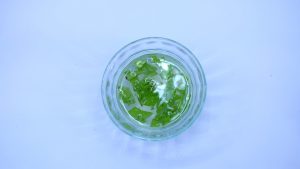
Aloe vera gel
-
Castor Oil
Castor oil has several health benefits that stand it out in home remedies literature. This remedy has been in the retinue of medicinal applications by cultures across Africa and India for ages. Other cultures across the Mediterranean region have put this to use successfully in remedying several ailments.
It is noted as a premier vegetable oil and is high in viscosity. It has excellent lubricating properties. The over-the-counter application called Castrol is made from castor oil. It is reputed to be high in concentrations of undecylenic acid and can fight off fungal infections too.
This oil should be applied in measured amounts directly onto the affected area. Due to the nature of the substance, it is advised to only be applied with the aid of a cotton ball. It should be left for a period of fifteen-twenty minutes. Then, wet washing cloth should be used to remove, and residual water. The area of skin should be wiped a number of times to ensure removal. Go over the same procedure twice daily to get the best results.
-
Tweezers
A pair of sterilized tweezers is highly recommended for this procedure. Apply a warm compress in preparation, immediately after removal of the warm compress. Carefully extract the hair by first bringing it to the surface then extracting the entire strand, down to the follicle. Do not snatch at the strand as plucking your skill very well may prove painful
As an alternative, a needle can be substituted in a tweezers’ place. Although not as effective as some other options, it is a good alternative if you do not have a tweezer.
-
Witch Hazel
Various studies have all reached the conclusion that it is indeed an all-natural astringent that works extraordinarily well in mitigating any inflammation on your body. You can put this to use by submerging a ball of cotton within the extract of witch hazel. This will then be put over the ingrown hair. You will see an improvement as it possesses anti-inflammatory agents that strongly fight off infections.
-
Yogurt
Yogurt is a natural remedy that comes up for mention in a number of skin and health challenges. A mixture of one tablespoon of yogurt and half a tablespoon of honey is needed here. Rub the mix on the site of the ingrown hair. Wash off after a wait of thirty minutes. Repeat the process four times a day.
-
Coffee
If it wasn’t already proved as a useful material, it can also expose damaged hair. Its acidic characteristics allow this. Prepare ¼ of a cup along with a cup of lukewarm water to apply here. Kneading the mixture in the form of a paste onto the spot for several minutes will alleviate the problem. This should be eventually rinsed away. Moisturize afterward.
-
Lemon Juice
The lemon juice is mentioned in many outlines of remedies that can be put to use for better health. Applying the juice of a lemon and then rinsing this off can be a great solution, as long as your skin does not react to it.
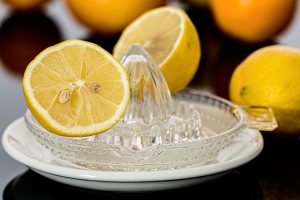
Fresh squeezed lemon juice will work the best
-
Eggshell membrane
As eggs are naturally super effective against ingrown hair, this cannot be overstated. Get some eggshell pieces. Allow it to sit on the skin for a period. After removing the membrane, you will have some shriveled-up membrane picking out the hair.
-
Lavender Essential Oil
This is especially effective against razor bumps. As a matter of fact, lavender comes up for mention as one of the planet’s most multi-reviewed curative substances on the planet. If you don’t already possess this, buy some now! It combats stress, anxiety, insomnia, bee stings, nausea, and minor burns on top of the razor bumps!
Its numerous qualities amount I it being able to, of course, have its place in ingrown hair treatment. Apply this product onto the dry skin by dropping a few drops in your hand and subsequently onto the hair. It can be applied to any place on your body prone to razor bumps.
-
Frankincense Essential Oil
This is an essential oil that is once again irreplaceable. It is also associated with the relaxation of the brain. It reduces swelling, increases immunity that wards off minor diseases. Frankincense essential oil has also been mentioned as effective to combat cancer and it fights flu and household germs. This has led to it featured as a key ingredient in cleaners.
It helps the skin by massaging it and reducing inflammation. The presence of antiseptic properties in it stops the introduction of germs. Like lavender, it provides tangible and immediate relief.
-
Warm Compress
The use of the warm compress is recognized in alternative and orthodox medical practice as curative and helpful. Get a bowl of hot water. Immerse a clean towel in it. Wring the towel before use. Place over the site of the ingrown hair. Repeat this process multiple times until the tip of the ingrown hair is revealed.
- Black Tea Bags
Black tea bags help with inflammatory conditions so that you can get some relief. The tannic acid that is present in this tea will alleviate the discoloration and other symptoms associated with this condition.
Wet the teabag and lightly apply to the spot of the issue. As another option concentrating a mixture for five minutes and applying that to the spot will achieve the same effect. Continue with this routine for the next seven days.
-
Potato Peels
This remedy is also put to use in a number of other health conditions. Treat the ingrown hair using the peel of a potato.
Get some potato peels and place it on the site of the ingrown hair. Secure this with the help of a band-aid will allow for an effective application. Keep it on for a full day. Boiling the potato peel will increase this remedies effectiveness. This works due to the presence of antioxidants in rich quantities in potatoes.
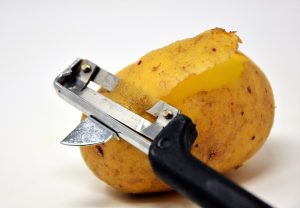
Rinse off the potato peel before applying it to your skin
Which of these home remedies are you most likely to use? Comment with your response below!
References
http://www.homeremediesorg.com/home-remedies/home-remedies-ingrown-hair-infection-remove-naturally/
http://www.wikihow.com/Remove-an-Ingrown-Hair
http://www.byrdie.co.uk/ingrown-hair-treatment
http://hairremoval.about.com/od/shaving/tp/ingrown-hair-home-remedies.htm
http://www.skinacea.com/how-to/treat-ingrown-hairs.html#.WN4tINKGO1s
https://homeremedyshop.com/9-home-remedies-for-ingrown-hair-prevention/
https://www.iamalpham.com/index.php/topics/ingrown-hair-treatment/
http://naturalremedyideas.com/ingrown-hair/


